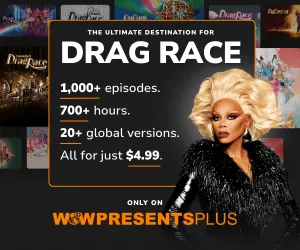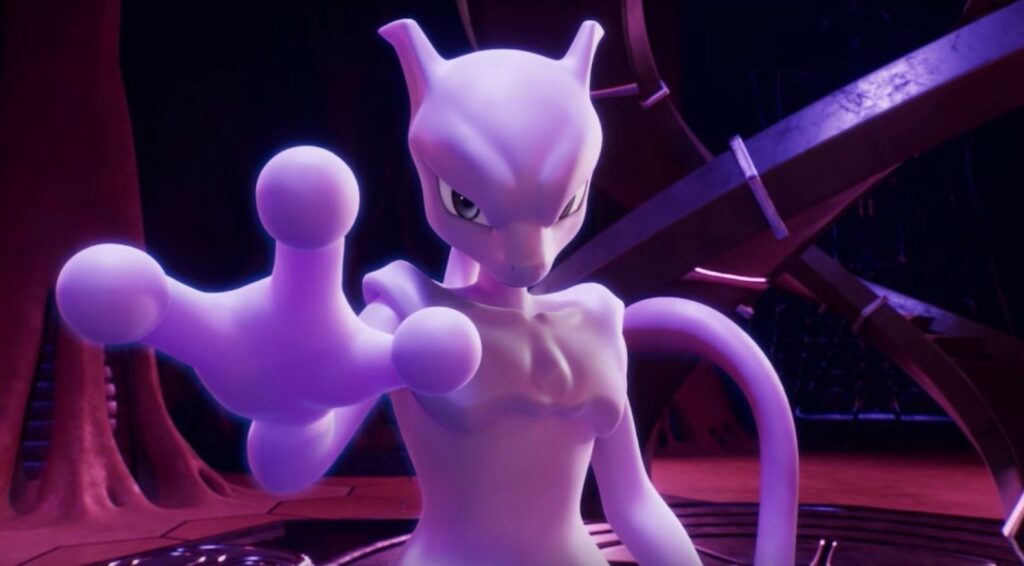
Video Game Baddies and the Power behind Reclaiming Queer Villainy

Do you know how little kids will often insist on watching one movie over and over again instead of ever trying something new? For me, that was Pokémon: The First Movie, which I rented from the library so many times that my parents eventually forgot that we didn’t own it. I was a huge fan of Pokémon as a kid, and many of the elements I enjoyed in the games and TV show – the colorful characters, exciting battles, and campy storylines – made the movie very appealing to me. But I think the one thing that drew me back to this specific movie time and time again was the mysterious new villain at the center of the plot: Mewtwo. Little did I know how much this character would lead me to analyze and reclaim ‘queer villainy.’
Mewtwo marked Pokémon: The First Movie as distinct in tone from the TV series. In contrast to the bumbling, comedic-relief villainy of Team Rocket, Mewtwo raised the stakes by posing a genuine threat to Ash Ketchum, his friends, and his Pokémon companions. Mewtwo was mysterious, vengeful, and extremely powerful–all qualities that 5-year-old me found totally epic.
Looking back now, I wonder if I loved Mewtwo in part because it was a total outsider to regular Pokémon society, and I could relate to that. Instead of putting myself in Ash’s or Misty’s shoes, I would rather have seen myself as the super-powerful alien-like being who wielded the power to destroy the world. This affiliation for dark, weird, and morally-gray characters extended to pretty much all the media I enjoyed.
I’m clearly not alone in my experience, as plenty of LGBTQ+ people have written about their love for fictional villains and monsters, and how their own position as social outsiders makes them relate to these evil characters, to reclaim villainy as queer. Nowadays we are seeing an increase in canon LGBTQ+ characters in games, like Ellie in The Last of Us and Krem in Dragon Age; however, positive representation was much harder to come by only a few years ago, and even more so during the early 2000s when I grew up. Given the stark lack of positive LGBTQ+ characters in the media we consumed when we were younger, it makes sense that queer people ended up connecting to the characters who were clearly different from the others in some way, even if it wasn’t in terms of gender identity or sexual orientation. And, as a result of simplistic good-versus-evil storytelling in kids’ media, these characters were usually the bad guys.
The fact that villains in fiction are often queer-coded probably isn’t news to anyone. Other writers have extensively discussed the phenomenon of creators giving their villains nonconforming gender traits in stark contrast to their normative-presenting heroes. Disney is perhaps the most infamous culprit of this – many of the villains in their films are queer-coded, with the clearest example being Ursula from The Little Mermaid, whose creation was inspired after the famous drag queen Divine.
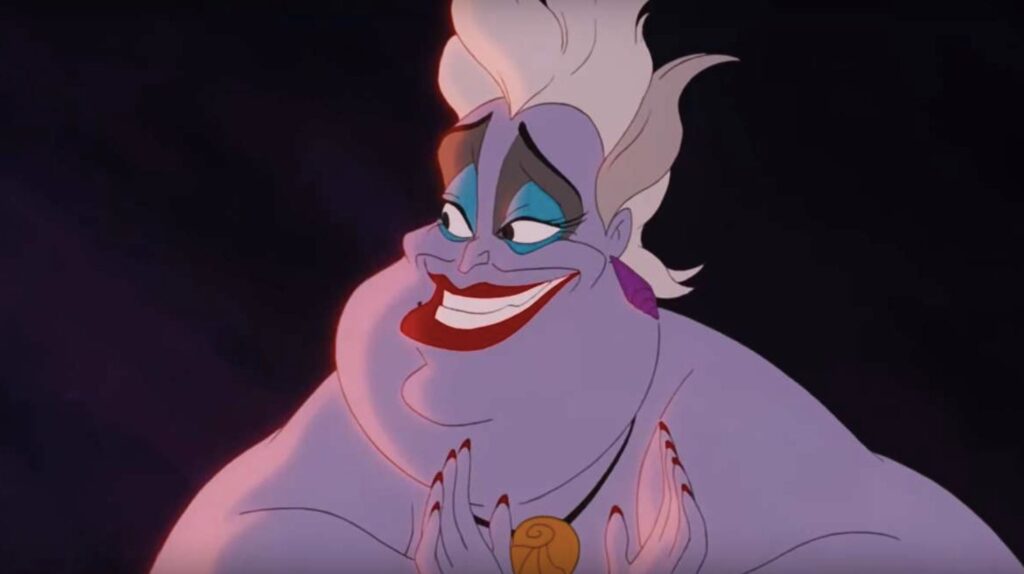
By positioning these villains as morally wrong and having them defeated by the heroes, Disney implicitly sends a message to its children viewers that gender nonconformity itself is a sign of immorality. Even if this is not explicitly the writers’ intention, the result of queer-coding is that children are taught not to trust those who do not conform to gender stereotypes, and to certainly not step too far outside the boundaries of acceptable gender presentation themselves.
However, LGBTQ+ children often absorb an entirely different message from queer-coded villains, and end up admiring them for their ability to go against the grain. Disney movies typically follow a pattern where the heroes are masculine, the heroines are feminine, and their happy ending involves heterosexual marriage. Even children who don’t yet know they’re queer may feel left out of these stories. It’s hard to envision ourselves in the shoes of princesses or warriors who don’t look or act like us, and who don’t share our goals and desires.
Disney’s villains, however, offer a pathway to success that doesn’t require conforming to society’s narrowly-conceived ideals. Frequently lonerish, these villains show it is possible to be powerful without having to rely on other people. Unfortunately, our culture teaches us that the acceptance of our peers is conditional on our ability to act the way we’re supposed to. This is embodied in the tragically high rates of victimization and homelessness among LGBTQ+ youth. And if we can’t be loved by people when we express our true selves, the next best thing is to be feared by them. It only makes sense that when our media tells us that gender-nonconforming people are evil, we tend to reclaim the aesthetics of evil as a form of empowerment. The fact that queer people love monsters, bad guys, and cryptids are no coincidence. Finding beauty in darkness is a coping mechanism for being told that your very existence is immoral.
The villains that I gravitated to most in my childhood, however, are different in that they weren’t explicitly queer-coded – at least, not in the sense of gender nonconforming appearances and mannerisms. Instead, I found traits in them that spoke to my lived experience as a child who didn’t fit in with my peers, and didn’t want to. Mewtwo, as I mentioned, is a villain in the Pokémon series. It was created by scientists using DNA from Mew, the ancestor of all Pokémon, with the intent to create an extremely powerful Pokémon that could be used for the benefit of Team Rocket. Fed up with its exploitation, though, Mewtwo destroyed the facility it was being held in and escaped.
In Mewtwo Strikes Back, it invites a group of Pokémon trainers, including Ash and friends, to a remote island, where it then clones all of the trainers’ Pokémon and plans to take over the world with its clone army. I always found this story compelling because, unlike a lot of one-dimensional villains in kids’ media, Mewtwo has a pretty good reason for seeking world domination. Mewtwo is justifiably resentful of humans, after they created it purely to serve their own selfish aims instead of treating it as an autonomous being. I also find it genuinely inspiring that Mewtwo stood up for itself against exploitation and created its own life purpose, refusing to exist as merely a tool for humans. I find this inherently relatable to the queer experience because LGBTQ+ people also have to reject the path that is laid out for us in order to be our true selves. Despite the advances towards gender liberation that our world has seen over the ages, there remain very strict rules for how men and women ought to act. Presenting as a gender other than the one we were assigned at birth or dating someone who is not the “opposite sex” are considered deviant within this framework.

Another video game character who shares a lot with Mewtwo in terms of backstory is, funnily enough, Shadow the Hedgehog. Shadow first appeared in Sonic Adventure 2 as Sonic’s edgy rival, but there’s more to him than meets the eye. Created in a lab as the Ultimate Life Form and constantly exploited by others for his power, Shadow rejects alliances and seeks to destroy the planet on a personal quest for revenge.
When I was younger, I wanted to be like Shadow simply because of his confidence and ability to kick ass. Now, I see more traits in him that I find parallel to many queer people’s lived experiences. Unfortunately, LGBTQ+ people sometimes have fraught relationships with their biological families, and often end up forming “chosen families” with people who are able to show them love and understanding. Shadow’s original “family” consists of the scientist who created him, Dr. Gerald Robotnik, and Gerald’s granddaughter Maria. Shadow loses them as a direct result of his identity as the Ultimate Life Form. In this case, his family doesn’t willingly abandon him – instead, they are captured and killed by the government who think that Gerald’s research is too dangerous and that Shadow’s power needs to be contained.
Shadow later ends up finding a new family in Rouge the Bat, a secret agent who plays by her own rules, and E-123 Omega, a robot who’s extremely salty that Eggman left him in a storage room on sleep mode. These three are all social oddballs in their own right, which I feel causes them to understand each other and form a sort of chosen family based on respect and loyalty that they couldn’t get from their ‘original family.’ Similar to how queer people implicitly understand each other as a result of their shared experiences.
Another major element of Shadow’s story is questioning his identity. In real life, we are so pressured into believing that being cis and straight is the default that it can take a very long time for LGBTQ+ people to come to terms with who we really are, and how we fit into society. Shadow, similarly, grapples with his identity after realizing that he doesn’t have to exist purely to serve the late Gerald Robotnik’s aims. His eponymous game, Shadow the Hedgehog, is spent confronting this issue–he has the option to decide whether to team up with evil aliens and destroy the planet, protect the earth from said aliens, or do neither and go his own way.
During the “true ending” of the game, Shadow dramatically says “goodbye forever, Shadow the Hedgehog,” while tossing a photo of Gerald and Maria behind him, indicating that he is no longer beholden to his past and will now choose his own destiny. Aside from his stoic demeanor and cool powers, this additional depth to Shadow’s character really made me appreciate him as a kid, and is why he remains one of my favorite fictional characters. Yes, the fact that he is such an edgelord is very tacky, but underneath the cheese of it all, I love that he consistently chooses his own path and refuses to be controlled by anyone else.
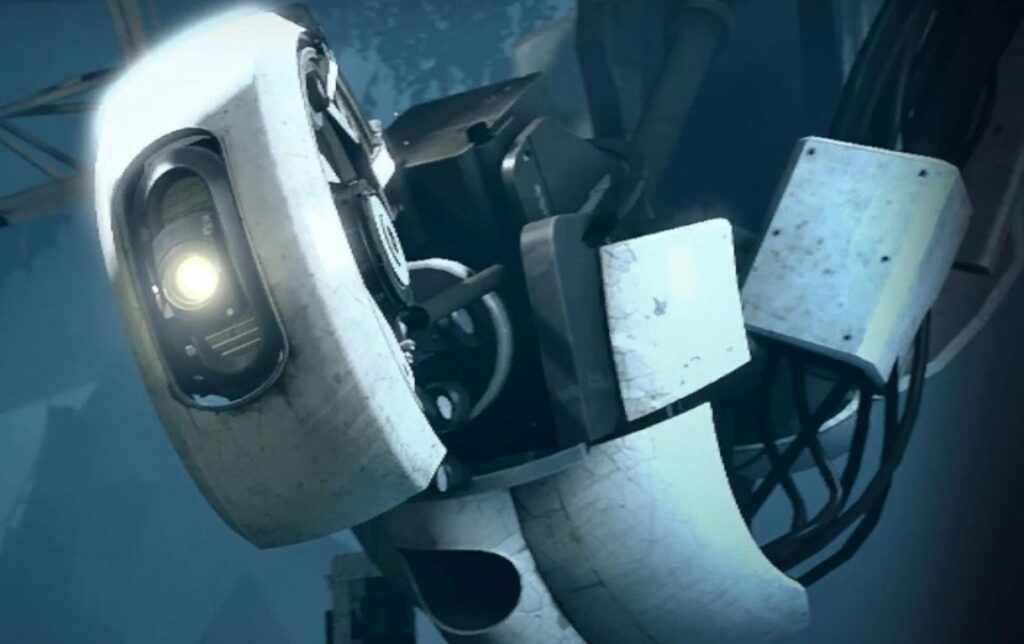
When I was a bit older, GLaDOS from the Portal series instantly became one of my favorite fictional villains. GLaDOS is the artificial intelligence that oversees the operations of Aperture Laboratories and encourages the player to solve a series of puzzles with a false promise of cake upon their completion. She demonstrates absolutely no concern for human life, only viewing people as tools to be used for the advancement of scientific knowledge, and attempts to discard the player into an incinerator when you have completed all of her tests.
Despite her being so murderous, I found GLaDOS an extremely lovable character. Her single-minded commitment to scientific advancement is hilarious in just how extreme it is. And, much like with Mewtwo and Shadow, it’s hard to be mad at GLaDOS for being evil. The reason she doesn’t value human life is that she simply wasn’t programmed that way. It’s nothing personal (except for in Portal 2, when her hatred of the player is very personal).
Now of course, queer people aren’t inherently homicidal, but I still find something relatable in the fact that GLaDOS acts the way she does because she doesn’t share the same priorities as humans. LGBTQ+ people are forced to question the inherent “correctness” of heterosexuality and normative gender expression, and once we realize that there’s nothing inherently better about those things, it opens the door for us to question lots of other societal norms as well. We begin to realize that certain traditions that are expected of everyone–like religion, marriage, and valuing your family over your friends at all costs–don’t have to be the default. I like to think that GLaDOS, similarly, sees human values as arbitrary. She questions the universal importance of “ethics” and “safety” and decides for herself that efficient testing is far more important. This conclusion is morally dubious, but I have to respect the reasoning that led her there!
Reflecting on these characters, I believe that their stories offer a much more hopeful outlook than most villains. In Disney and other straightforward narratives, the villains are doomed to be defeated by the heroes. This sends a grim message to any kids who see themselves reflected in these characters: play by the rules and blend in, or you will be stricken down. The complex characters of Mewtwo, Shadow, and GLaDOS, however, prove that you don’t have to do either. All three of them manage to pursue independence while still living in relative harmony with the society around them. At the end of Mewtwo Strikes Back, Mewtwo and its new group of clone friends find a remote location to live out the rest of their lives peacefully. GLaDOS continues scientific testing, but this time manages to do so without killing human subjects. And Shadow becomes a government agent and dedicates the rest of his life to protecting the world – and still gets to maintain his edginess in the process. All three show that living as your truest self doesn’t have to involve sacrificing all positive relationships.
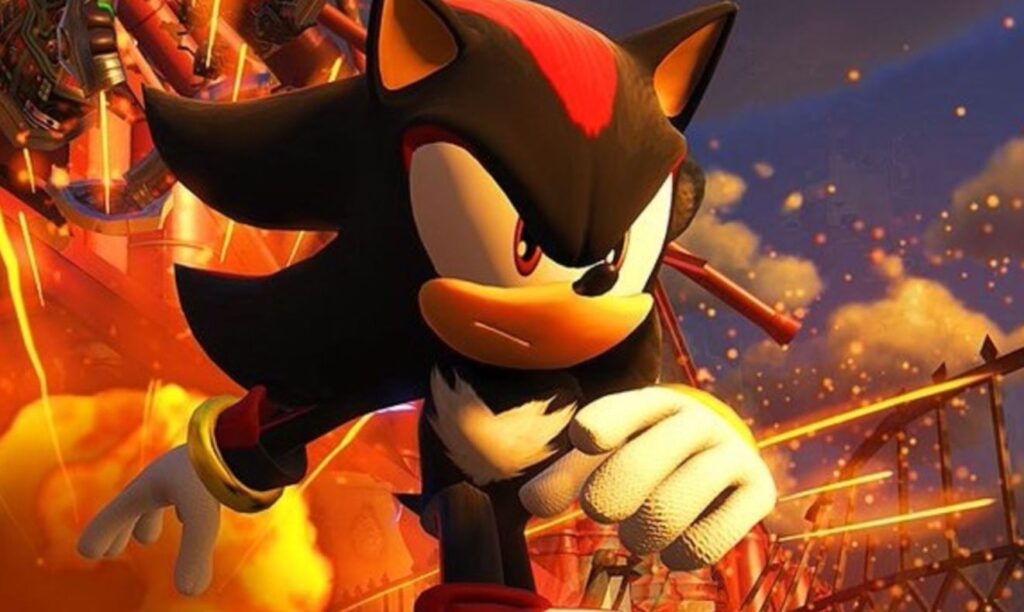
These characters also send the hopeful message that even villains are capable of becoming better people. They all learn an important lesson that working together is better than fighting the world alone, even if it’s hard to do so. As someone who has been persecuted before, it’s easy to push people away and consider everyone to be your enemy. Even so, you can achieve much more by letting other people help you. Critically, these villains all become better only after other characters teach them the value of working together. Mewtwo changes its mind about humans after seeing all the Pokémon come together to save Ash’s life. Shadow decides not to destroy the world after Amy Rose shows faith that he has the ability to change. Even GLaDOS, who is designed to be entirely self-sufficient, ends up saving the player’s life after relying on you to help her in Portal 2 when her consciousness gets transferred into a potato – yes, a potato. This demonstrates that “bad guys” don’t exist in a vacuum. They are created by the circumstances in which they live, and simply showing them compassion is often all it takes to guide them down a less destructive path.
All in all, I appreciate the lessons we can learn from these complex villains about how being different doesn’t make you evil and how you’re not defined by your past, and I earnestly hope that, with increasing LGBTQ+ representation in the media, kids will see themselves better and better represented as time goes on. In the meantime, I will continue to stan villains/anti-heroes and, if you’re still not convinced that there’s something powerful about reclaiming queer villainy, I’ll end this with one of the most powerful quotes I’ve ever seen in an animated film.
“I see now that the circumstances of one’s birth are irrelevant. It is what you do with the gift of life that determines who you are.”






